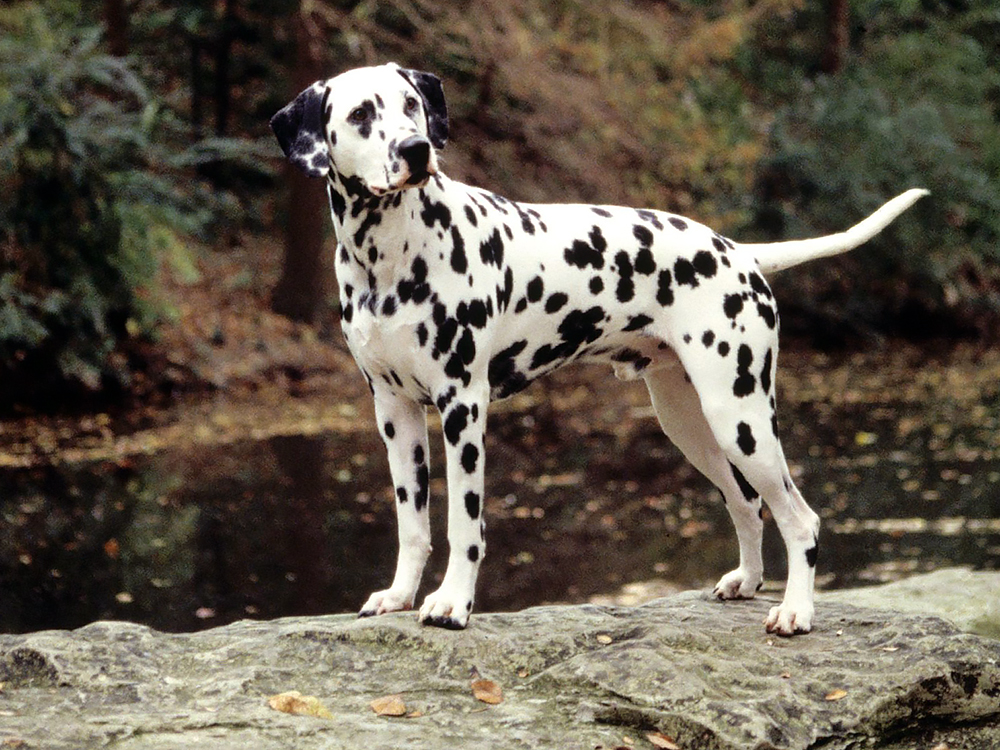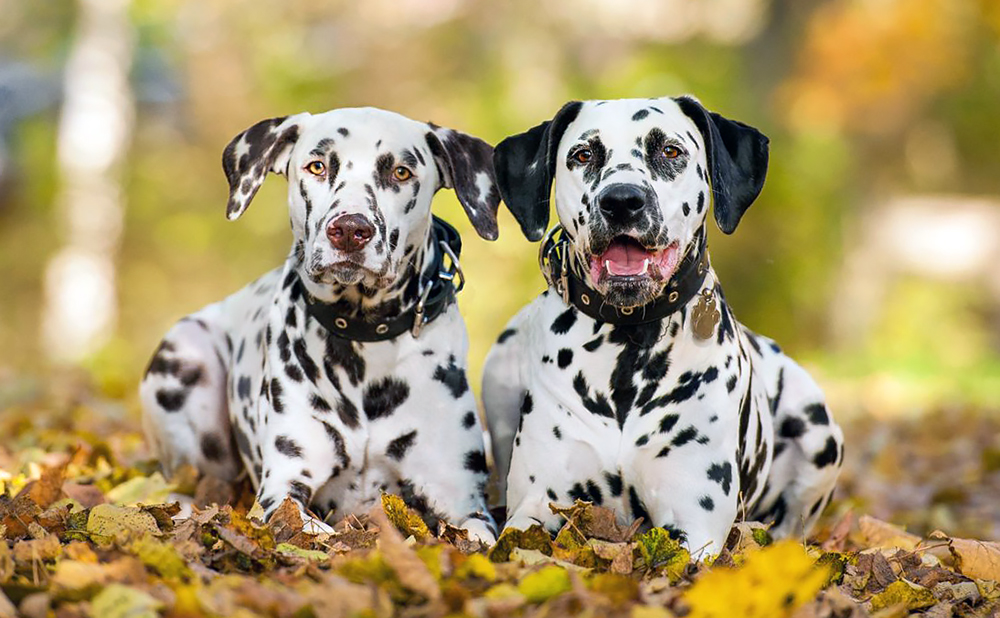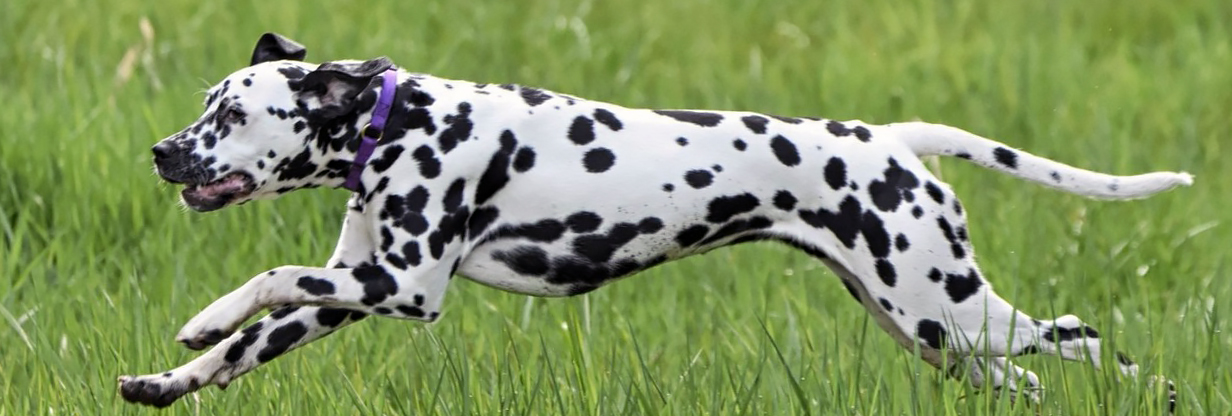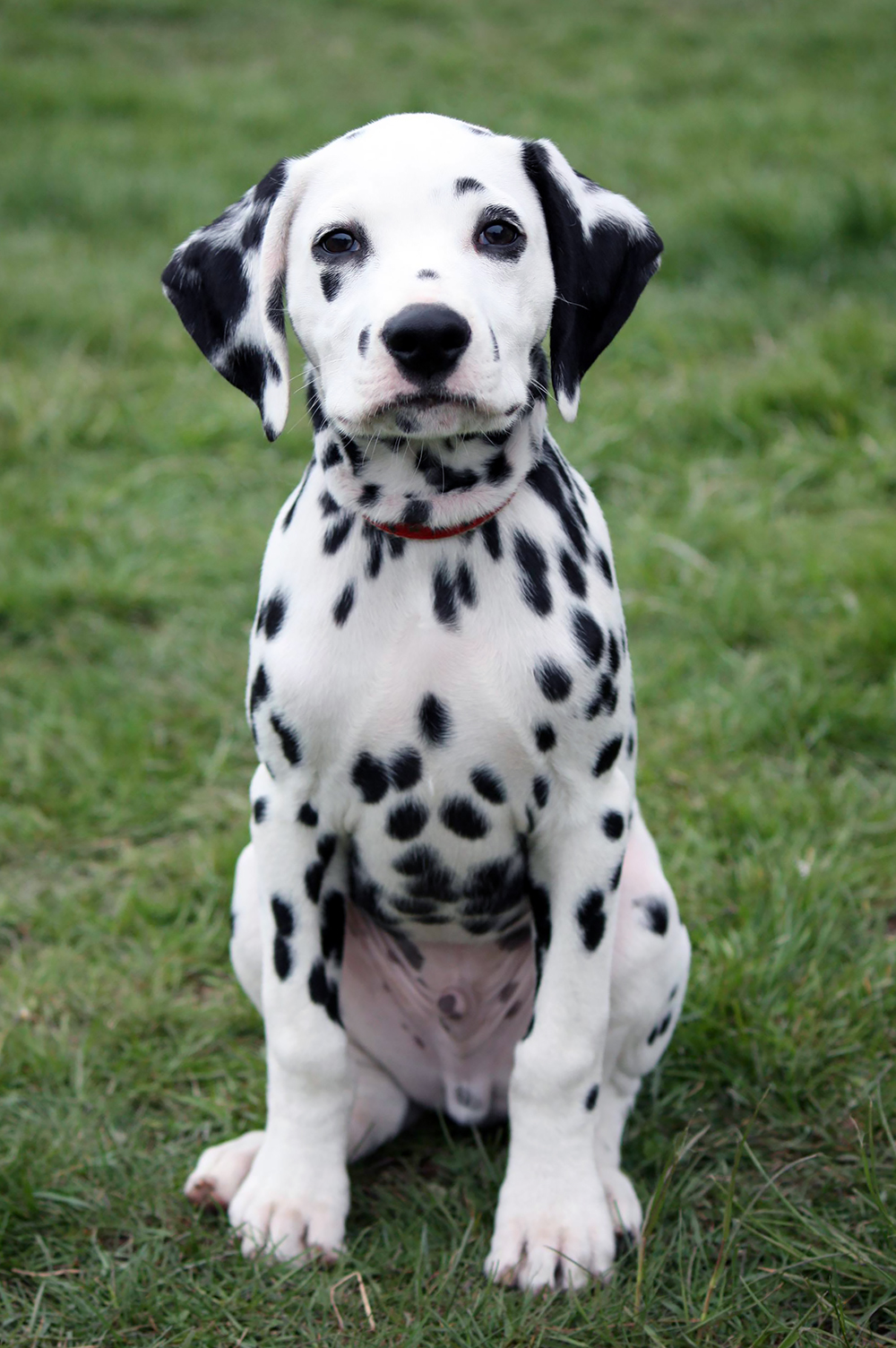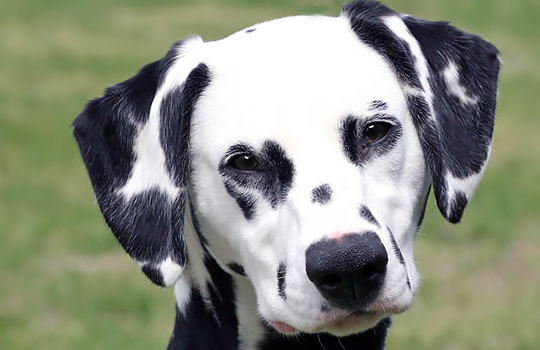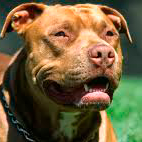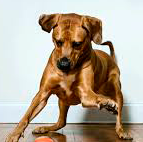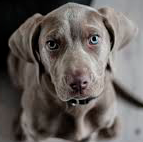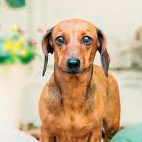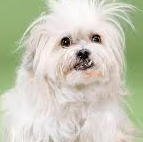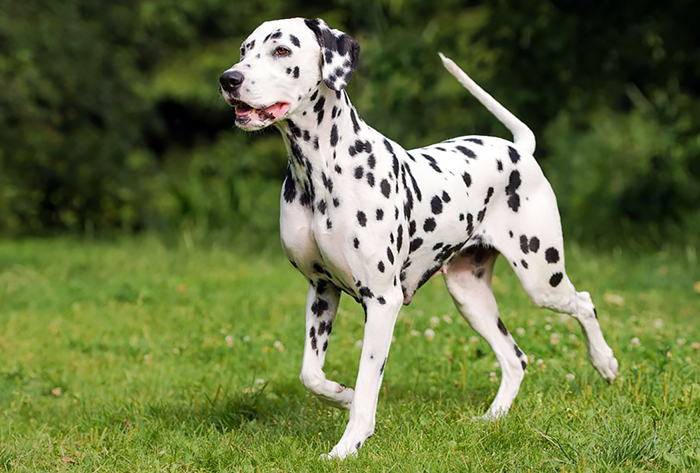
Dalmatian
Dalmatian pictures ➜
ORIGIN: Dalmatia, Croatian Republic.
UTILIZATION
Companion dog, family dog; easy to train as companion dog and as ambulance dog.
BRIEF HISTORICAL SUMMARY
The origin of the Dalmatian is still obscure and rests solely on suppositions. The earliest firm indications are to be found in pictures by Italian painters of the 16th century.
From depictions discovered in the tombs of ancient Egyptian pharaohs and corresponding to those in mediaeval paintings, it may be surmised that the Dalmatian has been in existence for some two thousand years.
These indications provide serious grounds for concluding that the breed originated in the Mediterranean region.
A work of Thomas Bewick, published in 1792, contains a description and a drawing of a Dalmatian, which Bewick refers to as “The Dalmatian or Coach Dog”. The first Dalmatian Standard was drawn up in the year 1882 by an Englishman named Vero Shaw. This standard was then incorporated in an official standard in 1890.
GENERAL APPEARANCE
Distinctively spotted, strong, muscular and active dog. Symmetrical in outline, free from coarseness and lumber, capable of great endurance and a fair turn of speed.
BEHAVIOUR / TEMPERAMENT
Outgoing and friendly, not shy nor hesitant, free from nervousness and aggression.
HEAD AND SKULL: Of fair length, skull flat, broadest between ears, temporal well defined. Stop well defined. Entirely free from wrinkle. Muzzle long, powerful, never snippy; lips clean, fitting jaw closely. Nose in black spotted variety always black, in liver spotted variety always brown.
MOUTH: Jaws strong with a perfect, regular and complete scissors bite.
EYES: Set moderately well apart, medium size, round, bright and sparkling, with intelligent expression. Colour dark in black spotted, light brown up to amber in liver spotted. Eye rims completely black or very dark coloured in black spotted, and liver brown in liver spotted.
EARS: Set on high, moderate size, rather wide at base, gradually tapering to rounded point; carried close to head; thin and fine in texture, well spotted.
NECK: Moderately long, well arched, light and tapering; entirely free from throatiness.
BODY: Chest deep and capacious. Ribs well sprung; well defined withers; powerful level black; loin strongly muscular and slightly arched.
TAIL: Reaching approximately to the hock. Strong at the base, gradually tapering towards end, free from coarseness. Never inserted too low nor too high. Carried with a slight upward curve, but never curled. Preferably spotted.Dalmatien puppies …
LIMBS
FOREQUARTERS: Shoulders moderately oblique, clean and muscular. Elbows close to body. Forelegs perfectly straight, strong, with good bone. Resilient pasterns.
HINDQUARTERS: Muscles well developed and clean; good turn of stifle; hocks slightly bent; viewed from behind hind legs parallel.
FEET: Round, compact, with well arched toes, cat-like; pads – round, tough and elastic. Nails black or white in black spotted variety, in liver spotted brown or white.
GAIT: Great freedom of movement. Smooth, powerful, rhythmic action with long stride; viewed from behind, legs moving parallel, handless tracking the fore. A short stride and paddling action incorrect.
COAT TEXTURE: Short, hard, dense, smooth and glossy.
COLOUR: Ground colour pure white. Black spotted variety with dense black spots, liver spotted variety with liver brown spots; not running together but round, well defined and well distributed; size 2-3 cm in diameter. Spots on head, tail and extremities smaller.
SIZE AND WEIGHT:
Overall balance of prime importance.
Height for Dogs: 56 – 61 cm, Ideal height 58 – 59 cm
for Bitches: 54 – 59 cm, Ideal height 56 – 57 cm
Ideal weight for Dogs about 27 kg
Ideal weight for Bitches about 24 kg
FAULTS: Any departure from the foregoing points should be considered a fault and the seriousness with which the fault should be regarded should be in exact proportion to ist degree.
DISQUALIFYING FAULTS: Patches, monocle, tricolors (black and liver brown spots on the same dog), Lemon (lemon spots. Other faults of pigmentation: blue eye, wall eye, Definitely over and undershot mouth, Deafness, Ectropion, entropion, Very timid or aggressive behaviour.
N.B.: Male animals should have two apparently normal testicles fully descended into the scrotum.


